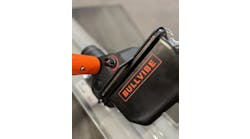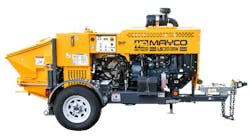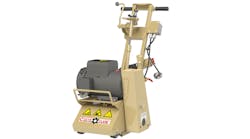Vibratory truss screeds are commonly used for precise strike-off and consolidation of concrete surfaces up to 10 inches thick where critical flatness is necessary. They can be used by do-it-yourselfers or smaller finishing crews on such one-day projects as driveways, garage slabs and similar pours that often result in profitable ventures for rental centers.
Most screed units can be transported to the jobsite in various sectional lengths in the back of pickup trucks or similar small vehicles.
Simple assembly is accomplished with standard tools often in less than an hour. A string line, laser or optical level can be used for setup and alignment, and many units accommodate crowns and valleys as well as level strike-offs. Truss screeds eliminate striking off with wood or magnesium two-by-fours.
Screeds are designed to simplify concrete placement, minimize overall labor time and significantly improve the quality of the slab. They can certainly save contractors time, but like any piece of construction equipment, they need to be used correctly to get the most for the money.
Rental center operators will benefit from knowing basic before, during and after tips to pass along to their rental customers. Even novices will produce a smooth professional slab in less time by following some simple guidelines.
Before use Before operation of the machine even begins, follow several steps to ensure that it is functioning properly.
First, set and true the screed. Then check the oil, gas and belt tension. The shaft, weights and bearings need to be checked for tightness or misalignment. Correct if needed. Coat the screed with a release agent.
Also, it is best to designate one person to operate, maintain, repair, clean and direct the use of the screed.
During use Now that the screed is checked, use one laborer for every 10 feet of screed. Spread the concrete 1/2 to 1 inch above the bottom of the front blade. Allowing the level to drop below the blades will cause a low spot and create more work later when the slab has to be re-leveled. The engine should be kept at the lowest speed possible while still achieving the desired results.
The combination of slow travel speed, uniformly spread concrete and one designated operator will enhance the quality of the floor.
After use Remove excess concrete on the screed with a high-volume pressure washer. Be sure to remove any concrete buildup on the underside of the front and rear blades.
Grease the shaft bearings to force out any grit or water. Disassemble the fine side of the screed sections if necessary.
Usage and techniques For the best results, strike off as soon as possible after placement, but make sure screeding is completed before bleedwater appears.
To help prevent a wavy surface, keep about 1-inch surcharge of concrete ahead of the screed by using square-end shovels and spreaders.
If possible, do not stop screeding at columns. Instead, zigzag around them at least 5 to 6 feet from the column to get better flatness. Hard work will be required around a column.
With proper screeding, restraightening can be minimized or eliminated, and a high-quality floor can be achieved.





